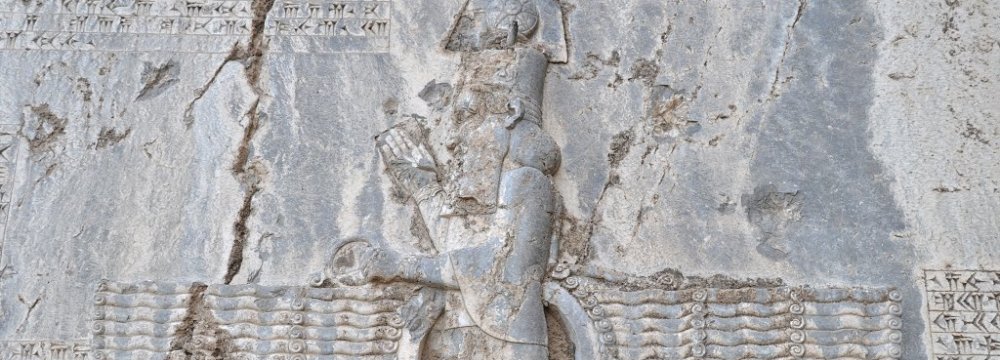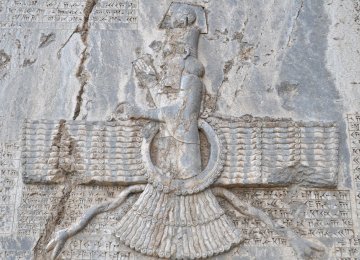A group of four archeologists and ancient languages experts have recently traveled to Iran to re-read Bistun (or Bisotun) inscription.
Bistun inscription is the most important and detailed historical document from Achaemenid period, inscribed on a mountain with the same name. In the past century, it has been studied and interpreted several times by archeologists and researchers and is still the center of attention, Cultural Heritage News agency (CHN) reports.
Bistun Mountain is located 30 km from Kermanshah-Hamadan road and is in fact a division of Harsin County. It embraces one of the pride and joys of this land for over 2500 years.
Bistun inscription belongs to Darius, the third Achaemenid king. However, to truly grasp the significance of the inscription and its content we need to travel back in time to when Cambyses II (Old Persian: Kamboujie), the elder son of Cyrus the Great inherited the crown after his father’s death.
Bardia’s Killing
The killing of Bardia, Cambyses’s younger brother, by him has been widely heard. According to Darius the Great, Cambyses II, after becoming king of Persia but before setting out for Egypt, killed Bardia and kept it secret.
In 525 B.C. Cambyses marched against Egypt. Bardia’s death was not known to the people, and so in Persia the throne was seized by a usurper who pretended to be Bardia and proclaimed himself king. He most likely was a magus, or a Zoroastrian priest named Gaumata, who granted tax relief for three years.
Cambyses attempted to march against him, but died shortly after under disputed circumstances. According to the Bistun inscription he “was dead by his own death.” Scholars interpret this phrase as indicating either a natural death or a suicide or accidental death.
A number of Persian nobles discovered that their new ruler was an impostor, and a group of seven nobles plotted to kill him. They surprised him at a castle in Nisa, home of the Nisean horses, and stabbed him to death in September 522 BC. Darius, one of the seven, was proclaimed as ruler shortly after.
Rebellion
Darius ascended the throne by overthrowing Gaumata. The new king met with rebellion throughout his kingdom and quelled them each time. By 522 BC, the majority, if not the entire Achaemenid Empire was revolting against Darius and in turmoil. Darius had a loyal army, led by close confidants and nobles (including the six nobles with whom he removed Gaumata) with whom he was able to suppress and quell all revolts within a year.
After securing his authority over the entire empire, Darius embarked on campaigns to different places such as Egypt, Central Asia, Afghanistan and the Indus Valley; fighting 19 battles and defeating 9 kings.
Darius left a detailed account of these revolutions at the Bistun Inscription.
The inscription is approximately 15 metres high, 25 metres wide and 100 metres up a limestone cliff along the road that connected the capitals of Babylonia and Media, Babylon and Ecbatana (modern Hamadan). It includes three versions of the same text, written in three different cuneiform script languages: Old Persian, Elamite, and Babylonian (a later form of Akkadian).
It is illustrated by a life-sized bas-relief of Darius I, the Great, holding a bow as a sign of kingship, with his left foot on the chest of a figure lying on his back before him. The supine figure is reputed to be the pretender Gaumata. Darius is attended to the left by two servants, his bow-carrier and lance-bearer and nine one-metre figures stand to the right, with hands tied and rope around their necks, representing conquered peoples. Faravahar floats above, giving his blessing to the king.
In antiquity Bistun’s name was Bagastana, which means ‘place where the gods dwell’. it was considered sacred as some other ancient sites are seen along with the inscription.
Bistun inscription was registered on UNESCO World Heritage list in 2006. The future will tell what novel findings are added by the new research team to the existing profound knowledge of Achaemenid history that the inscription has already given us.





